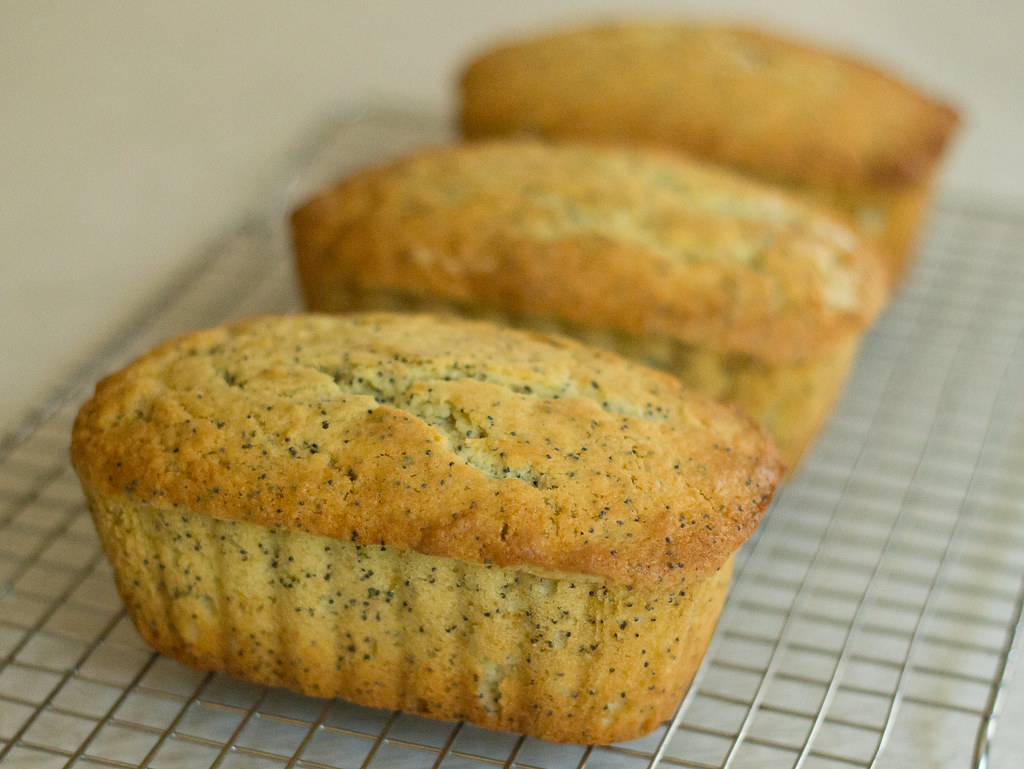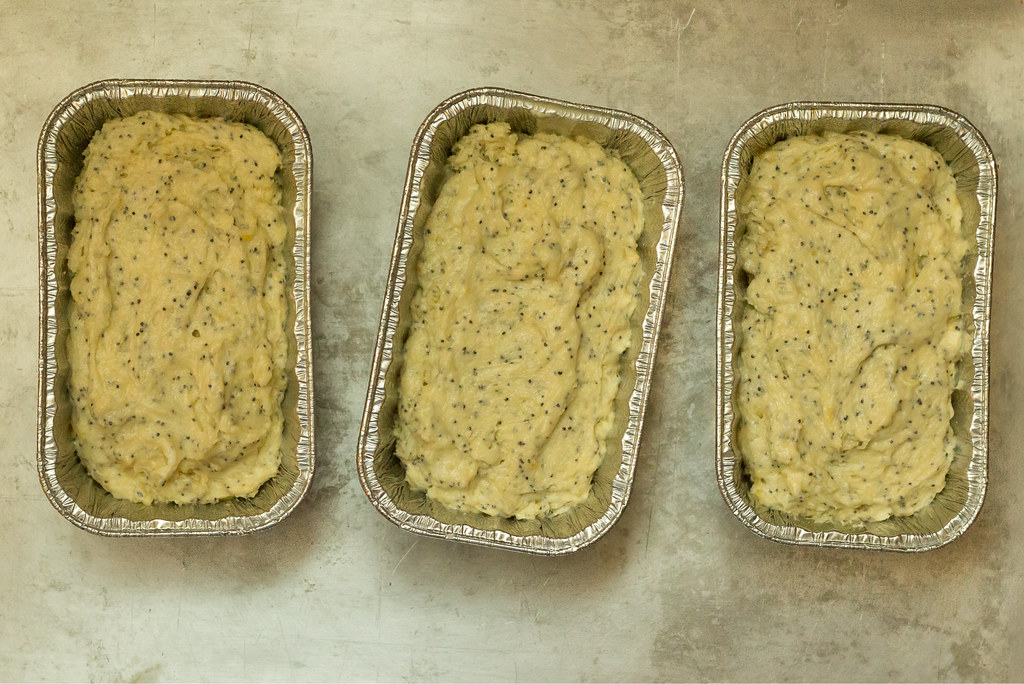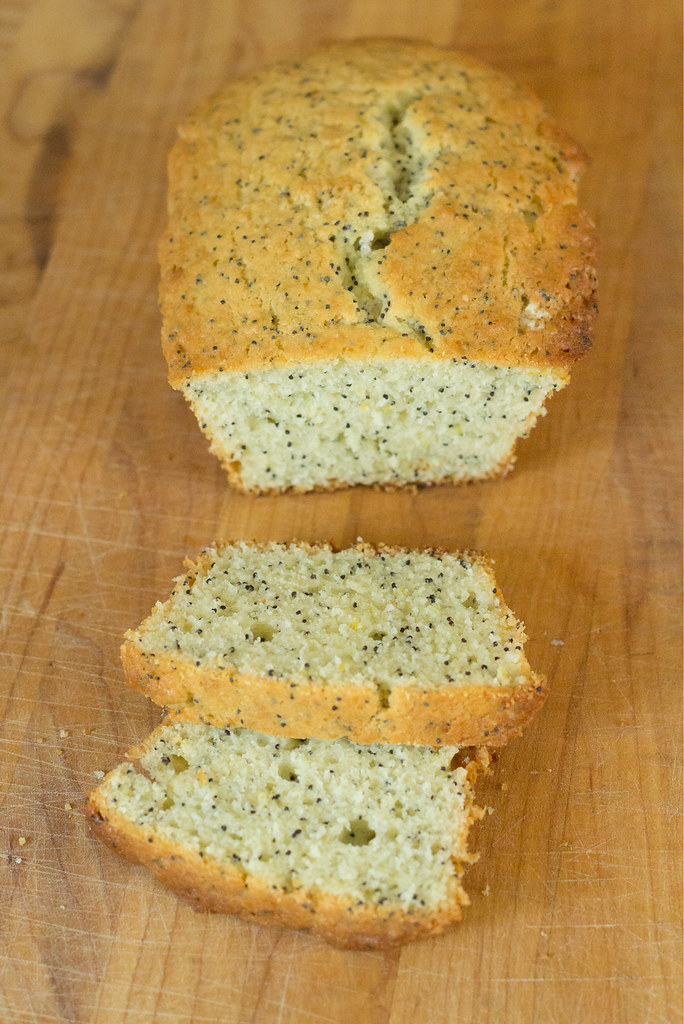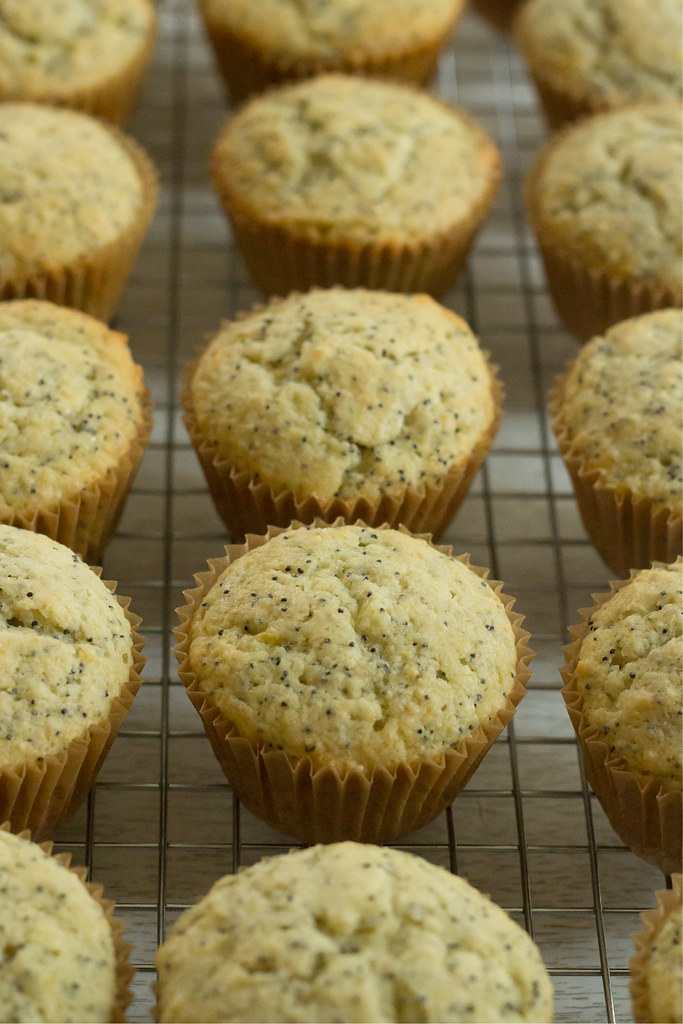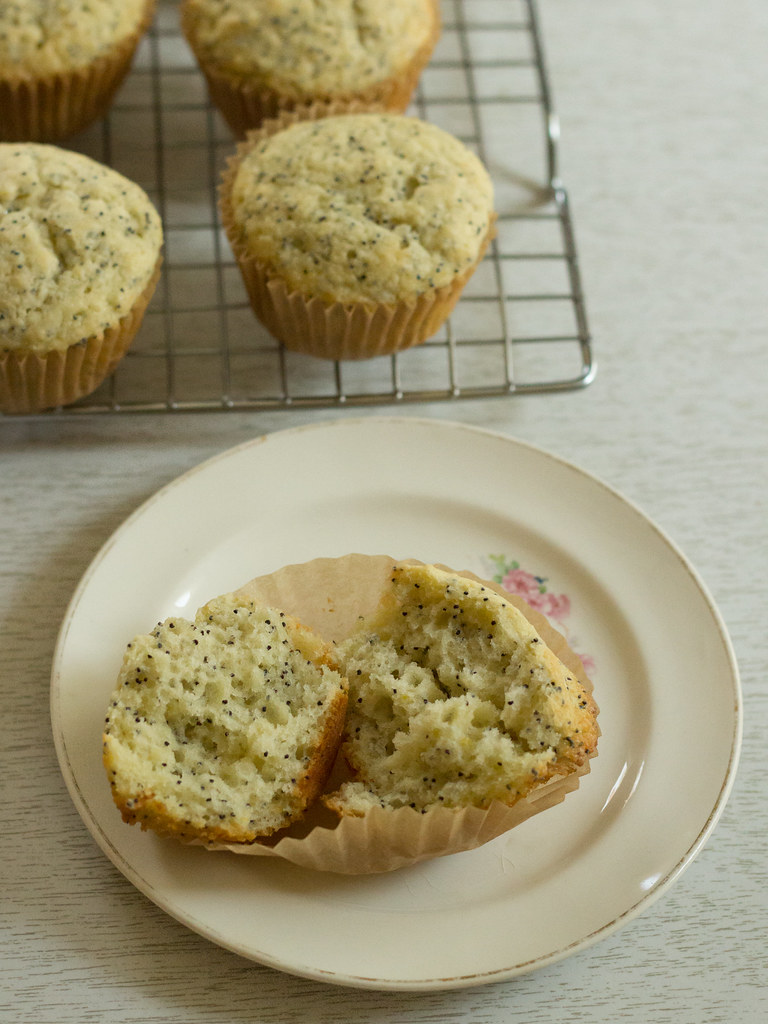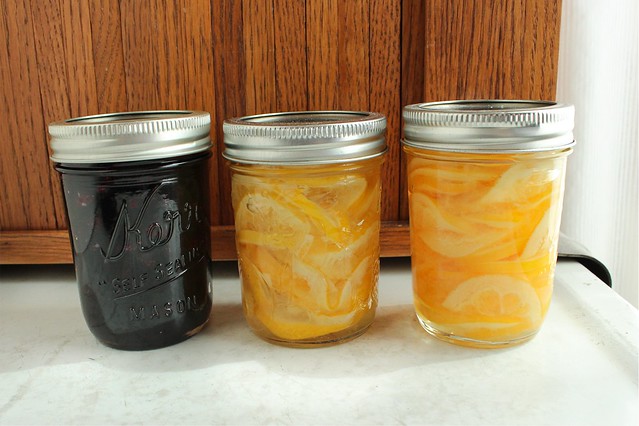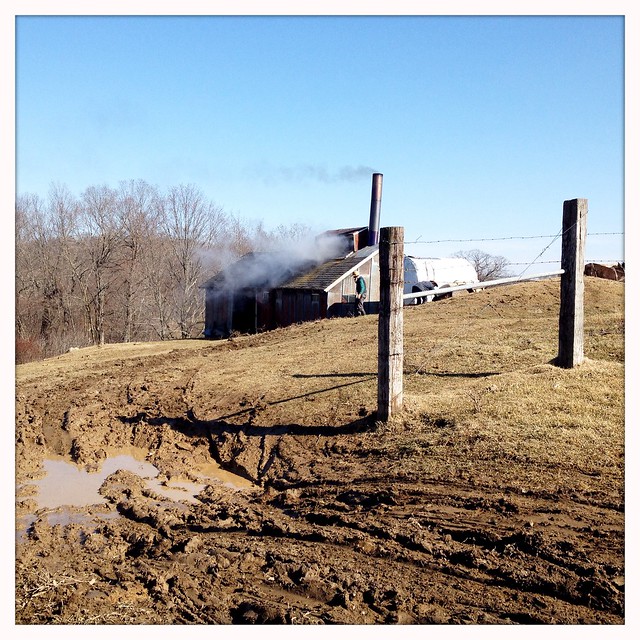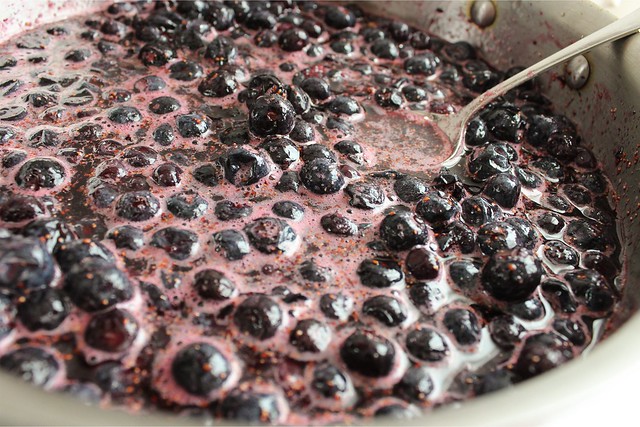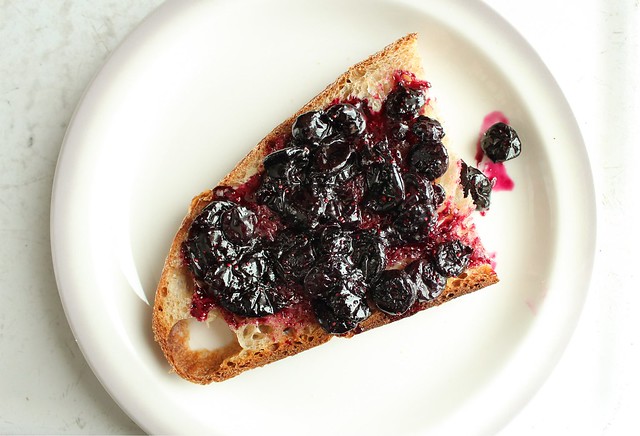Sometimes I get intense cravings for poppy seeds. Maybe it's the Eastern European heritage, maybe it's the nutty, oily crunch only they can give a baked good. Maybe it's because I enjoy them most as a vehicle for almond extract, since the poppy seed seems more than well suited to that bitter almond flavor. In my flavor showdown between vanilla. lemon, and almond, almond wins out every single time.
It seems there are a shortage of good muffins in the world. I think I surprised a muffin-loving friend recently when I admitted that I prefer loaf-pan quick breads to muffins. Muffins just seem to stale quickly, and with a loaf of bread, I can slice off what I like. Nevermind that it's tougher to transport a slice of quick bread than a muffin...
Then there are the muffin tin liners: to use or not to use?
But every so often, I really want a muffin. And, I really want a poppy seed muffin. And then I remember that I've never really found the perfect muffin to satisfy what in my mind a poppy seed muffin should be. Poppy seed muffins seem to come in either lemon or almond flavors. Lemon leaves me wanting as much as I like it, and almond muffins never seem to contain the bracing amount of almond extract that I so badly desire. Most poppy seed muffins are dense and overly oily - probably because most are oil based and contain a LOT of it. Most are crazy sweet too, containing as much sugar as flour in some instances. A recent Internet perusal of poppy seed muffins/loaf breads met with the same results I've been accustomed to, but fortunately I was able to turn to a recent cookbook crush to meet my needs.
I think I identify most with cookbook obsessed home cooks. We are the lot that hears mention of a new book (or are even the ones that scan publisher websites for upcoming releases), get our hands on a copy, and then set to work making what marvels lurk inside. I have so many titles that seem like living, breathing friends, the authors voices coaching me through the language of their worlds. I have learned so much from so many titles, and been endlessly inspired.
Those who are with me also fully understand the "cookbook crush", and I'll bet that a whole genre of my peers can site readily those tomes that grabbed them tenderly (or vigorously) and caused them to think of nothing other than what was on the page and on the plate for days on end. I go through many of these each year, and increasingly there are just so many great books coming out that I never need to wonder what to make next at my house.
I began reading Cheryl Sternman Rule's Yogurt Culture a few weeks ago, excited from the first page after she opened her story in Eritrea. Eritrea, a tiny country I couldn't have found on a world map before our in-depth geographical study of Africa last year. It is a simple and well written book, a heavy thing that feels good in your hands, the pages thick and somewhat glossy (but not so glossy that they encourage fingerprints). I made her recipe for 9 chocolate cupcakes right away to use up some chocolate frosting from a birthday cake commission. I wasn't at all surprised that every family member loved them. After the muffin discussion with my friend, I figured I needed to make poppy seed bread (or muffins) - so I looked to Cheryl's lemon almond version of a loaf cake that looked like it had good bones for poppy seed inclusion...
Lemon AND almond! I have read poppy seed recipes for years and never have seen the two together. And despite my almond addition, I did add the zest of 1 lemon and found it to balance everything well. This was also a butter-based bread, with only 1 cup of sugar in pleasant proportion to the 2 cups of flour (and 1/2 c. almond meal). I was sold.
Billed as a loaf cake, I actually made it pretty much as written on the first go. I baked it in small, disposable tins - disposable except I've been washing them out and reusing them since last Christmas when I wanted to give petite pound cakes as gifts. (Sometimes, I think the best bakeware is the absolute cheapest. The thin aluminum allows great browning on all sides.) There was probably a bit too much batter for the 3 pans, and that's when I conceded that a muffin might be in my future. I altered it a little bit more, decided upon using tin liners, and lined up a couple neighbors to share in the wealth of muffins.
Almond Lemon Poppy Seed Bread (or Muffins) (adapted from Cheryl Sternman Rule)
makes 15-16 standard size muffins, 1 9x5 sized loaf, or 3 3 1/2x6 mini loaves
- 10 T. room temperature butter (that's 5 oz.)
- 2 c. AP flour
- 2 t. baking powder
- 1/4 t. baking soda
- 1 t. kosher salt
- 1/2 c. blanched almond meal
- 3 T. poppy seeds, preferably fresh Dutch Blue ones
- grated zest of 1 lemon
- 1 c. granulated sugar
- 2 room temperature eggs.
- 2 1/2 - 3 t. almond extract, depending on your level of almond love
- 1 c. plain yogurt (not a thick Greek style)
Preheat the oven to 350, and butter your loaf pan(s) or line muffin tins with liners.
In a large bowl, whisk the flour, baking powder, baking soda, salt, almond meal, poppy seeds, and lemon zest together until well blended. In the bowl of a stand mixer (or another bowl with a hand mixer), cream the butter and sugar until lightened and "fluffy", about 5 minutes. Mix in the eggs, one at a time, beating for 1 minute after each addition, then beat in the almond extract. On low speed, mix in half of the dry ingredients until just blended. Add the yogurt, also blended until just incorporated, then add the final half of the dry ingredients. Mix well, but don't overmix - and use a spatula for the final few strokes to be sure there are no dry pockets. The batter will be somewhat stiff.
Portion into the prepared muffin tins (or loaf pans), filling about 3/4 of the way full. Bake for 20-25 minutes for muffins, slightly longer for mini-loaves, and 45-55 minutes for a large loaf. A tester should come out cleanly from the center and the tops should be slightly browned.
Leftovers store well at room temperature for 2 or 3 days if covered tightly with glass.
I'll admit that these taste best after just coming to room temperature; the tops have a slight crust that disappears by the next day. But the airy yet stable structure of these muffins are just what I have been looking for, and I was able to enough almond extract to satisfy myself and 3 tablespoons of poppy seed are enough to give them a good crunch in every bite. You could decide to glaze these with confectioner's sugar thinned with lemon juice, or more almond extract (and milk or cream instead of the lemon juice) - but they are just fine as is. Next time I have the craving for a poppy seed muffin, I'll know just where to turn.

